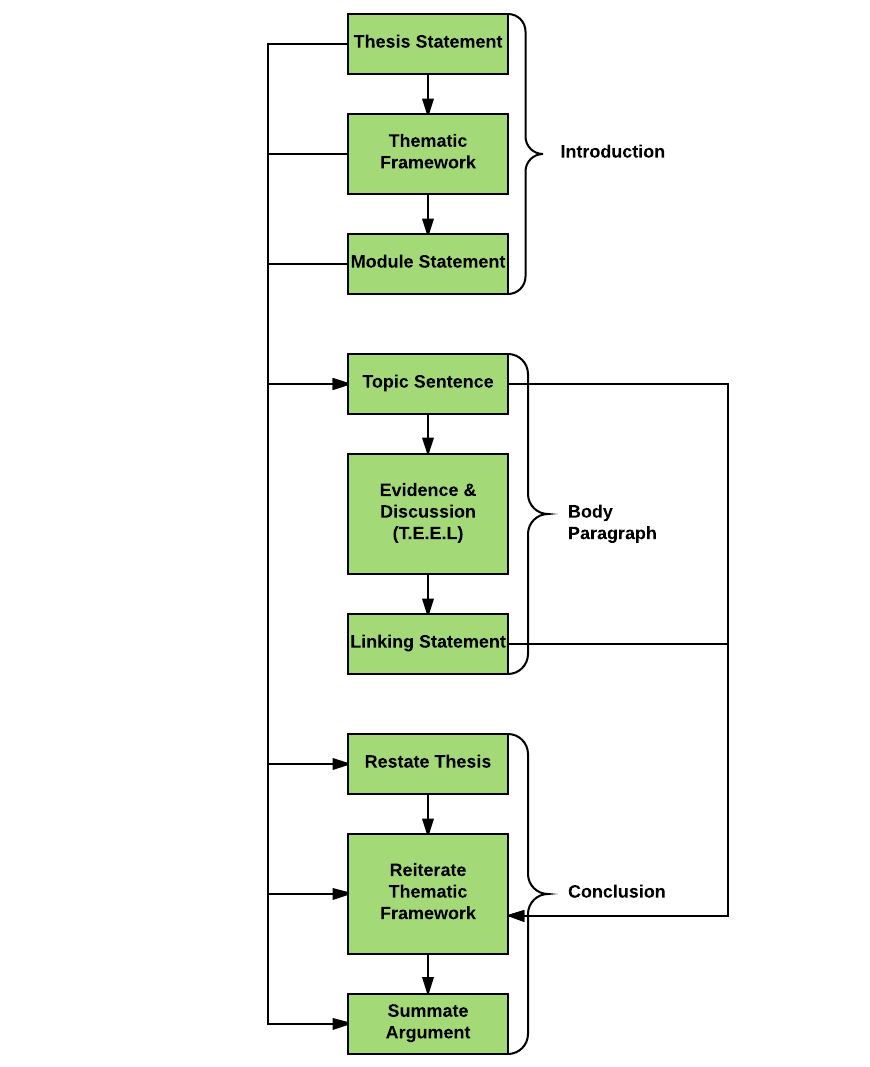Welcome to Matrix Education
To ensure we are showing you the most relevant content, please select your location below.
Select a year to see courses
Learn online or on-campus during the term or school holidays
Learn online or on-campus during the term or school holidays
Learn online or on-campus during the term or school holidays
Learn online or on-campus during the term or school holidays
Learn online or on-campus during the term or school holidays
Learn online or on-campus during the term or school holidays
Learn online or on-campus during the term or school holidays
Get HSC Trial exam ready in just a week
Get HSC exam ready in just a week
Select a year to see available courses
Science guides to help you get ahead
Science guides to help you get ahead

This post, How to Structure Your Essay Introduction, is the second post in our five part Essay Writing Series. In it, we’ll explain how to introduce your themes and structure them into an effective thematic framework.
Some common questions students have about structuring an essay introduction are:
In this post, we will answer these questions and then give you a step-by-step guide to writing a thematic framework.
Students are often told to produce a sustained argument, but they do not know how to do this. This is because they do not realise how the parts of an essay fit together as a unified whole to present a clear and sustained thesis. A good introduction structure is crucial to producing a sustained argument.
Learning how to write a thematic framework is a crucial step in developing essay writing skills. Band 6 essays score highly because they have excellent structure. Readers must be able to follow you argument from the thesis, to the introduction of themes, and then onto your body paragraphs.
Your analysis and insights won’t get you marks unless they are presented clearly and logically. Writing a strong thematic framework is part of good essay introduction structure. You need it to create a sustained argument to score a Band 6 result!
Read on to find out how to do this by writing a good thematic framework.
To get started let’s think a bit more about essay structure.
The point of essay structure is to develop a sustained argument. Let’s think about this process for a moment:
In this last post, we looked at the structure of an essay. Let’s refresh our memory.

This demonstrates that there is a logical sequence to writing an essay. As we considered in the previous post, this process looks like:
What we want to do in ‘1. Introduction’ Step 2, is introduce the key ideas that will:
Let’s look at how this works.
Matrix provides students with detailed theory books, insightful lessons with expert instructors, and practical feedback to help students improve their marks! Find out more.
Start HSC English confidently
Expert teachers, detailed feedback, one-to-one help! Learn from home with Matrix+ Online English courses.
The thematic framework is a crucial piece of signposting in an essay. But what is signposting?
Signposting is giving cues to a reader so they know where they are orientated in your essay. When we introduce the themes in an introduction, we are telling the reader what to expect as we progress through the argument. This is the thematic framework.
The topic sentences we use to introduce our body paragraphs have a direct connection to the thematic framework in our introduction. When the reader reads the topic sentences, they see a cue that reminds them of what and how we said we were going to argue. This creates a sustained argument.
Without the thematic framework and topic sentences, you cannot have a sustained argument!
Now we know what a thematic framework needs to do, let’s put one together.
To build our thematic framework, we will continue look at the question we considered from the first post on Shakespeare’s Macbeth.
Before we look at how to write a topic sentence, we need to have a thesis to link to. Continuing on from Part 1 in this series, we will use Shakespeare’s The Tragedy of Macbeth (1606) as our text. We will continue to answer the same question:
“William Shakespeare’s Macbeth is not about revenge, it is a play concerned with morality and madness.”
To what extent do you agree with this statement? Make use of detailed references to the play in your response.
To recap, the thesis we developed was:
“The resolution of The Tragedy of Macbeth (1606) is driven by revenge. However, it is Shakespeare’s interrogation of the morality of Macbeth’s actions and his subsequent descent into madness that is the central focus of the text.”
What makes this a good thesis?
Remember, a good thesis must be clear and concise. This thesis is good because:
An essay is our opinion on the text, this is reflected in any statement we make. By taking a nuanced position we don’t need to say that we are arguing to a specific extent. It is implicit in our response.
Now that we have made a thesis statement, we need to explain what themes we will discuss and how we will approach them. We call this section of the introduction the thematic framework.
Let’s look at the themes we need to use and how to outline them.
Our question presents the themes we will discuss – revenge, morality, madness – so we don’t need to decide on them. But we do need to explain briefly what aspects of them we will discuss, and how they relate to our argument. Thus, a good thematic framework should be at least two to three sentences for a three theme essay.
In this example, for the sake of presenting a clear example, we will present one sentence for each theme:
Macbeth’s madness is a response to his awareness of his immorality, it is driven by his fear of the revenge he feels he deserves. Macbeth’s actions are immoral, killing a king is regicide and the murder of his friends demonstrate his increasing depravity. As Macbeth’s madness emerges, he questions his morality and is plagued by visions and haunted by the spirits of his victims. |
Let’s unpack why this is a good thematic framework:
“Macbeth’s madness is a response to his awareness of his immorality, it is driven by his fear of the revenge he feels he deserves.”
“Macbeth’s actions are immoral, killing a king is regicide and the murder of his friends demonstrate his increasing depravity.”
“As Macbeth’s madness emerges, he questions his morality and is plagued by visions and haunted by the spirits of his victims.”
Thus, the ordering of these sentences structures the logic of our response:
This is the process Matrix English Advanced students are taught to use when writing their introductions. When you write your own thematic framework, you could use two sentences if you want to be more concise. We would recommend that you make it at least two sentences, ensuring you include enough detail to foreground the argument you will present in the body.
What is next?
Now we have a thesis and thematic framework, we can look at how to write topic sentences. Topic sentences are an important part of essay structure and signposting.
Read Part 3 of the Essay writing series, How to Write Topic Sentences to learn why topic sentences are essential to a great essay structure!
© Matrix Education and www.matrix.edu.au, 2025. Unauthorised use and/or duplication of this material without express and written permission from this site’s author and/or owner is strictly prohibited. Excerpts and links may be used, provided that full and clear credit is given to Matrix Education and www.matrix.edu.au with appropriate and specific direction to the original content.